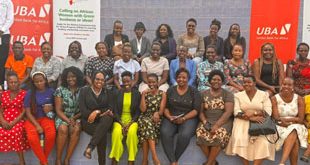
Will technology deliver a free and fair election this time?
By John Walubengo
Elections present a milestone beyond which countries either strengthen their democratic credentials or become failed states. Often states fail when there are either perceived or blatant election malpractices. This in turn can lead to prolonged civil unrest.
Numerous cases exist across the continent. But I will use the Kenyan case to illustrate how election processes can be compromised, and then brought back from the brink with the use of technology.
Following the election in 2007 Kenya erupted into two months of unprecedented conflict. People were unhappy with the outcome which saw Mwai Kibaki of the incumbent Party of National Unity being declared the winner ahead of Raila Odinga and his Orange Democratic Movement. Many disputed the final tally.
To preempt a similar situation in future elections, a commission led by former South African judge Justice Johann Kriegler was set up. The Kriegler Commission made several critical findings. These included instances of double voter registration, widespread impersonation and ballot stuffing. It concluded that, as a result, it was impossible to know who actually won the election.
The report also made a number of recommendations. The main ones were that technology should be used in future elections to avoid manipulation of the process.
The Kenyan government acted on the recommendations and elections electronic systems had been put in place by the time of the 2013 poll. But it wasn’t all plain sailing. There were system failures which led to another contested outcome. This was finally settled by the Supreme Court.
As Kenya gears up for the next poll in August, questions are being asked about how well prepared the country is this time round. The issue has become a particularly hot topic in the wake of the government’s decision to allow for a backup manual system to kick in if the technology fails again.
This has raised concerns that the government will pre-emptively switch to the manual system raising the possibility that the vote will be rigged.
Types of voter fraud
The Kriegler report found a range of election malpractices. These included:
- Double voter registration. This occurs when prospective voters register twice in different locations. These voters then manipulate the system by voting twice for the same candidate.
- Impersonation. This happens when voters whose names are on the register don’t show up to vote but are listed as having voted.
- Ballot stuffing. This is one of the most blatant election malpractices and involves the placing of pre-marked ballot papers into ballot boxes before voting commences.
A combination of all three led to high voter turnout in the strongholds of the two main candidates, leading to a skewed election result.
The report concluded that Kenya’s manual election system facilitated the malpractices.
 The Independent Uganda: You get the Truth we Pay the Price
The Independent Uganda: You get the Truth we Pay the Price


